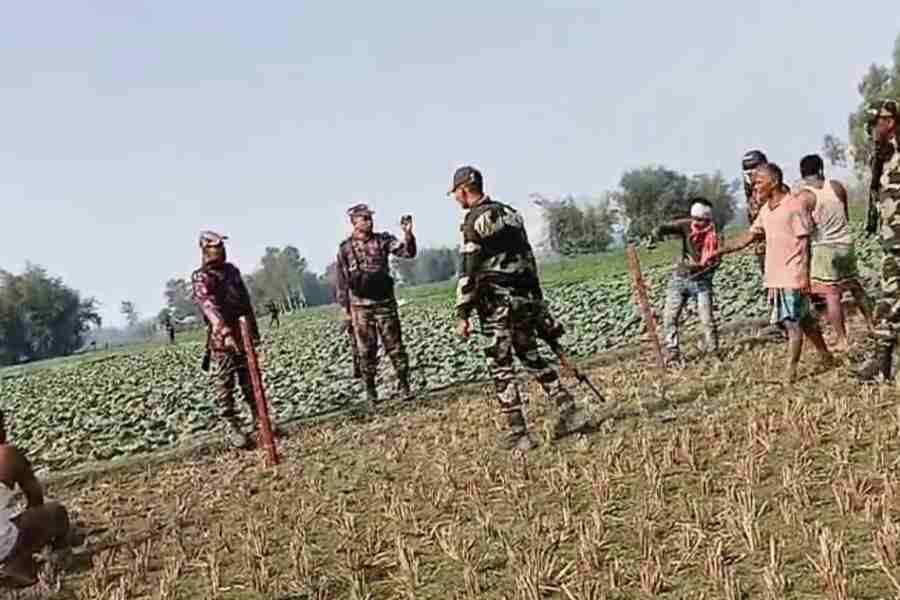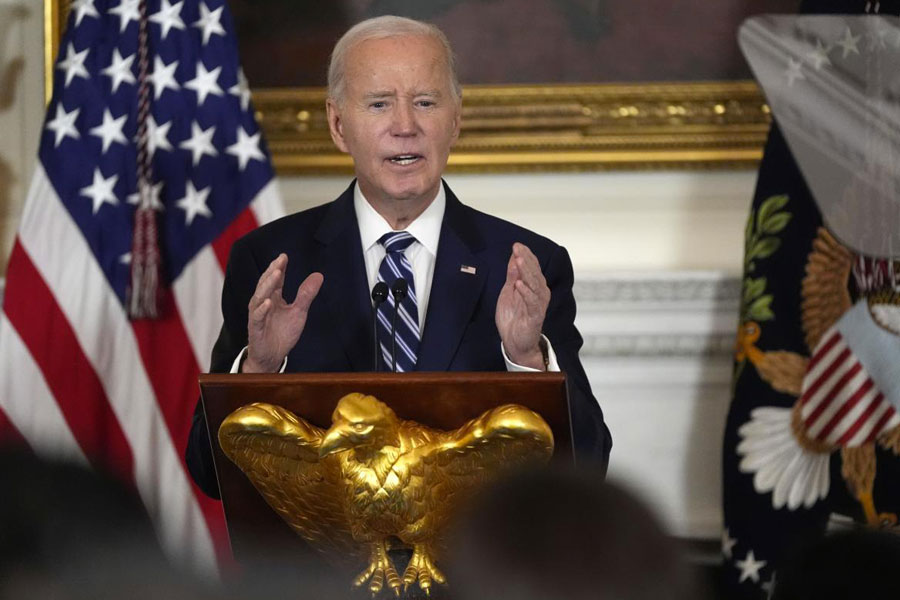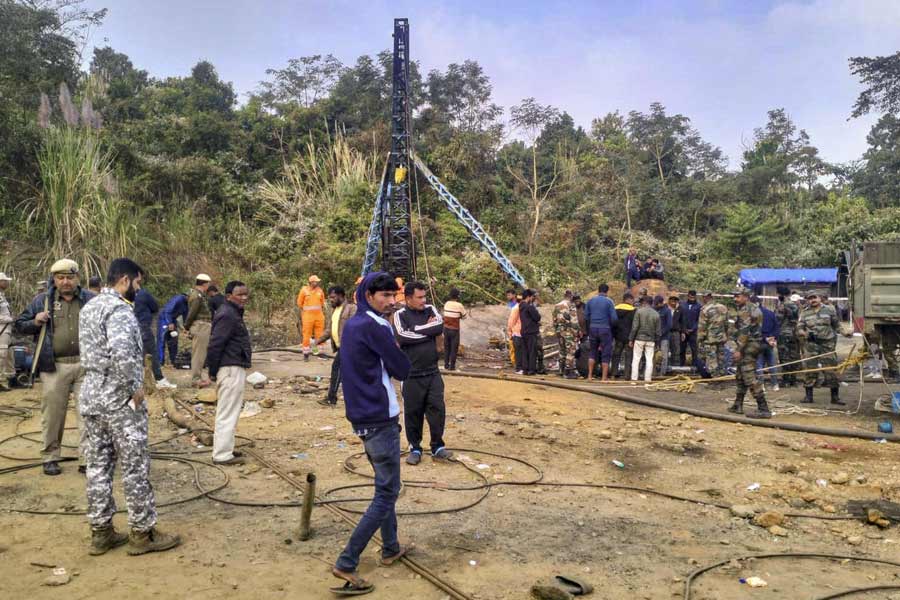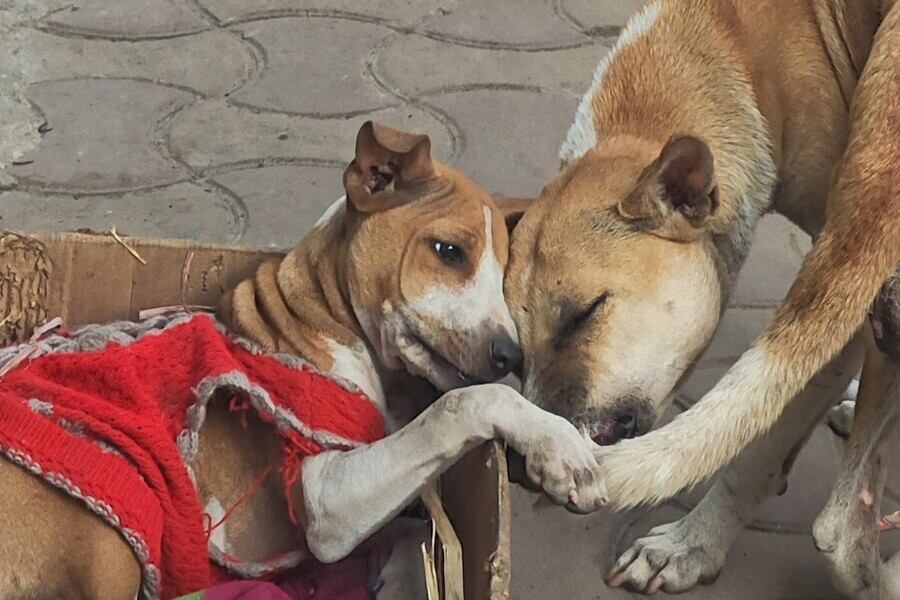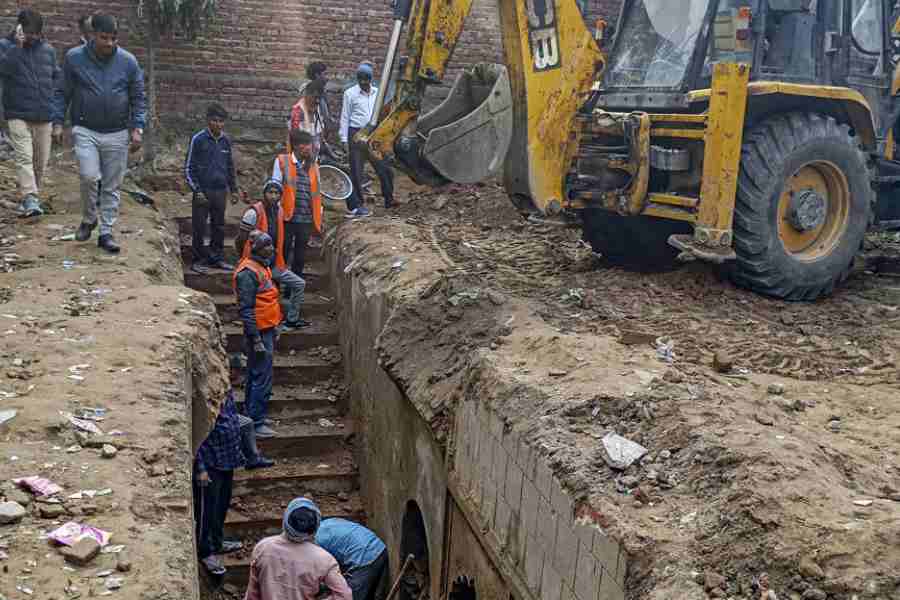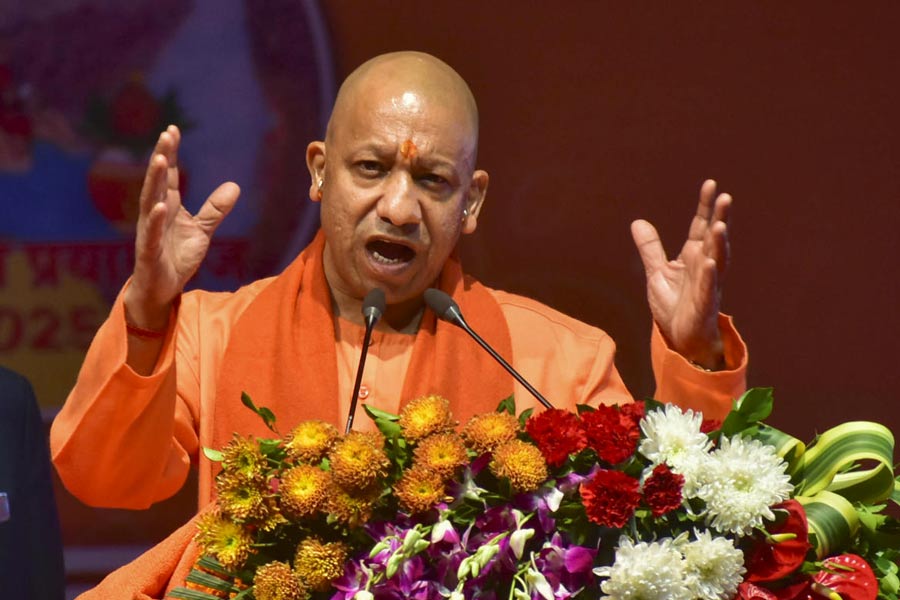Residents of an Indian village on Friday began fencing parts of the boundary of the lone Bangladeshi enclave of Dahagram-Angarpota, ignoring objections from the Border Guard Bangladesh.
While armed BGB jawans argued with the Indian villagers, trying to prevent them
from erecting the four-foot-high, iron-pole-and-barbed-wire fencing, the BSF stood guard and facilitated the process.
“The BGB jawans tried to heckle and prevent us from putting up the fence. The presence of the BSF jawans gave us the courage to go ahead,” said Anup Roy, a resident of Andaran-Kharkharia village in the Mekhliganj sub-division of Cooch Behar district.
While the Tin Bigha Corridor — a narrow 178m by 85m road that connects Dahagram-Angarpota with mainland Bangladesh — remains heavily guarded by both countries’ border police, the enclave itself is unfenced.
“One major problem has been cattle from Dahagram-Angarpota straying into our agricultural land and damaging crops,” Roy said.
“Attempts at infiltration and smuggling are the other problems. We want a permanent solution, and are therefore putting up the fencing.”
Around 45 villagers started the job around 9.30am. They had covered around 2km by the end of the day. “A little over 1km is left; we will put up fences along this stretch too,” a villager said.
A little more than 3km of Dahagram-Angarpota’s boundary lies close to Andaran-Kharkharia.
Asked where they had found the money to build the fence, the villagers sidestepped the question.
Andaran-Kharkharia’s initiative coincides with a downturn in bilateral relations following the Sheikh Hasina government’s ouster, and comes at a time when Indian authorities are focused on having the entire 4,096km border with Bangladesh fenced.
Bengal’s border with Bangladesh stretches 2,217km, and around 20 per cent of it is unfenced. The BSF is trying to complete the fencing as fast as it can.
Over the past few days, the process of fencing along a stretch in Malda was stopped because of objections from the BGB.
BSF officials claimed they had halted work because of their “own issues”, but several local workers engaged by the CPWD for the job said BGB personnel had threatened them with guns and pushed them away from the border.
Workers Bhodol Mandal and Dhananjoy Mandal told this newspaper that some BGB personnel had threatened to shoot them.
“We are not scared. If the agency engaged for the fencing job goes ahead, we are ready to join the work in the interest of the country,” Bhodol said.
A retired BSF officer said the BGB’s approach towards the fencing exercise had come as a surprise at a time when New Delhi and Dhaka were trying to normalise ties.
“It should be resolved through dialogue.... But this attempt by local people to put up fencing in Cooch Behar is unprecedented. It is proof that the villagers in these areas feel unsafe without a fence,” he said.
Recently, residents of South Berubari in Jalpaiguri district asked the administration to acquire land and hand it over to the BSF so that the border could be fenced.
“Now, villagers in Cooch Behar are putting up fences on their own. This is an interesting trend,” the retired BSF officer said.
Fencing the stretch, a local retired teacher said, is “necessary in today’s context”. He, however, regretted that the fencing would rob the area of its “unique character” of having an unfenced 3.5km stretch of the border.
“Our area received global attention because of the Tin Bigha corridor. I still remember that it used to be open for Bangladeshis — to move between the enclave and the mainland — for six hours,” the retired teacher said.
“Then, in 1996, the duration allowed for such movement was increased to 12 hours and in 2011, it was thrown open for 24 hours for Bangladeshi residents,” he added.
“We used to interact with Bangladeshi citizens of the enclave and there was kind of a bonding.... Now, there will be fences between us.”
In 1992, India had leased out land measuring around three bighas to Bangladesh for the construction of the Tin Bigha corridor.
Some 51 Bangladeshi enclaves were merged with the Indian mainland in 2015 following a land boundary agreement signed by Prime Ministers Narendra Modi and Sheikh Hasina. In exchange, all the 101 Indian enclaves were merged into Bangladesh.
Dahagram-Angarpota, however, remained part of Bangladesh. It’s located in the Patgram “upazila” (sub-district) under Lalmonirhat district. The Tin Bigha corridor, with Indian territory on both sides, remains its lone connecting road with mainland Bangladesh.
Additional reporting by Soumya De Sarkar in Malda

